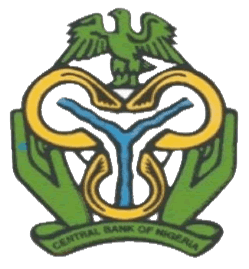Please use this identifier to cite or link to this item:
https://library.cbn.gov.ng:8443/jspui/handle/123456789/164Full metadata record
| DC Field | Value | Language |
|---|---|---|
| dc.contributor.author | Yaaba, Baba N. | - |
| dc.date.accessioned | 2018-05-28T07:39:14Z | - |
| dc.date.available | 2018-05-28T07:39:14Z | - |
| dc.date.issued | 2012-03 | - |
| dc.identifier.citation | Yaaba, B. N. (2012). Is Monetary Policy Responsive to External Reserves? empirical evidences from Nigeria. Economic Financial Review, 50(1), 87-113. | en_US |
| dc.identifier.issn | 19572968 | - |
| dc.identifier.uri | http://library.cbn.gov.ng:8092/jspui/handle/123456789/164 | - |
| dc.description.abstract | The global economy has witnessed extraordinary boost in the accumulation of external reserves, following the Asian financial crisis of the 1990s. External reserves increased sharply from US$1.2 trillion in 1995 to over US$10.0 trillion in January 2012. Developing countries increased their share from 30.0 per cent in 1990 to 67.0 per cent in 2011. Nigeria is not left out in this trend, as external reserves grew from US$5.5 billion in 1999 to US$34.68 billion in March 2012, representing over 530 per cent increase within the period. This placed Nigeria as the 44th largest reserves holder in the world. Reflecting on this phenomenal increase in Nigeria’s reserves, that places Nigeria in such a strategic position, there is the need to examine, if the Central Bank of Nigeria considers the changes in the level of reserves, in its monetary policy decision making. The study applied an Autoregressive Distributed Lag (ARDL) approach to an extended version of the Taylor-type rule to estimate the monetary policy reaction function for Nigeria, with emphasis on external reserves. The results show that the Central Bank of Nigeria reacts to changes in the level of external reserves and exchange rate, in addition to output gap, thereby rendering the cogent conventional Taylor rule inadequate to assess the monetary policy reaction function of the Central Bank of Nigeria. This justifies the modification of the rule to incorporate other variables in addition to inflation and output to capture the reaction of monetary policy to developments in the economy. The study also validates the interest rate smoothing behavior, showing that the Central Bank of Nigeria is concerned with costs associated with interest rate variability. | en_US |
| dc.description.sponsorship | Central Bank of Nigeria | en_US |
| dc.language.iso | en | en_US |
| dc.publisher | Central Bank of Nigeria | en_US |
| dc.relation.ispartofseries | Economic and Financial Review;Vol 50, No. 1 | - |
| dc.subject | Monetary policy | en_US |
| dc.subject | External reserves | en_US |
| dc.subject | ARDL | en_US |
| dc.subject | Central bank | en_US |
| dc.title | Is Monetary Policy Responsive to External Reserves?: empirical evidences from Nigeria | en_US |
| dc.type | Article | en_US |
| Appears in Collections: | Economic and Financial Review | |
Files in This Item:
| File | Description | Size | Format | |
|---|---|---|---|---|
| Is Monetary Policy Responsive to External Reserves Empirical Evidence from Nigeria.pdf | 471.01 kB | Adobe PDF |  View/Open |
Items in DSpace are protected by copyright, with all rights reserved, unless otherwise indicated.
Admin Tools
